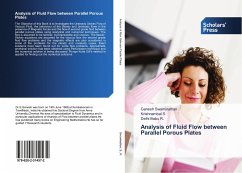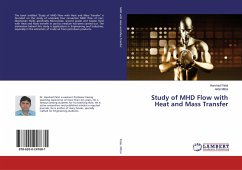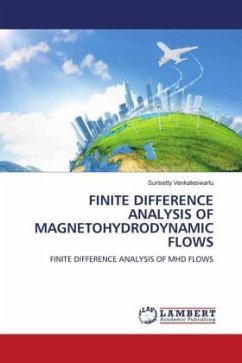
Analysis of magnetohydrodynamic flow
in parallel porous plates
Versandkostenfrei!
Versandfertig in 6-10 Tagen
40,99 €
inkl. MwSt.

PAYBACK Punkte
20 °P sammeln!
The Objective of this Book is to focus on the effect of dust particles on the velocity of electrically conducting viscous liquid placed between two parallel porous plates in the presence of a transverse magnetic field. The differential equations governing the flow are solved by similarity transformation. The various analytical quantities such as the velocity field of the fluid, velocity of the dust particles and pressure distribution are interpreted. The results revealed that the velocity of dust particle is higher than that velocity of the fluid for all the parameters studied. In addition to ...
The Objective of this Book is to focus on the effect of dust particles on the velocity of electrically conducting viscous liquid placed between two parallel porous plates in the presence of a transverse magnetic field. The differential equations governing the flow are solved by similarity transformation. The various analytical quantities such as the velocity field of the fluid, velocity of the dust particles and pressure distribution are interpreted. The results revealed that the velocity of dust particle is higher than that velocity of the fluid for all the parameters studied. In addition to the above differential equations and transform techniques are used to attain the solution of the Mathematical equations to discuss the MHD Stokes flow through two parallel plates with one in uniform motion and the other plate at rest and uniform suction at the stationary plate. The velocity profile for the flow of the fluid and pressure gradient are discussed. The Model is developed as the Steady Magnetohydrodynamic flow with an angular velocity between parallel porous plates.












